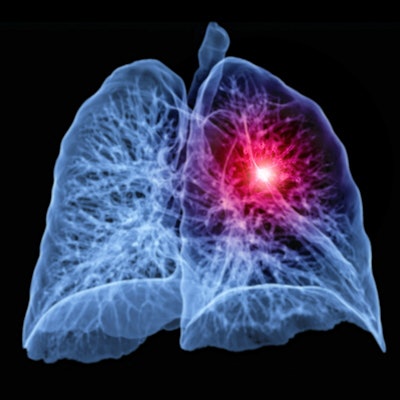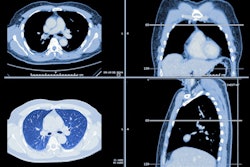
More than 60% of incidental lung nodules found on CT scans are followed up to completion, but there are a few factors that do affect the likelihood of follow-up, according to a case study published February 3 in the Journal of the American College of Radiology.
The results shed light on the fact that follow-up of incidental lung nodules could use more standardization, wrote a group led by Dr. Ronilda Lacson, PhD, of Brigham and Women's Hospital in Boston.
"Optimal pulmonary nodule follow-up impacts early lung cancer detection, in turn, associated with mortality reduction," the team noted. "A better understanding of follow-up is needed, as well as identification of factors associated with suboptimal follow-up completion."
The increased use of imaging over the past few decades has also increased the prevalence of incidental findings, Lacson's team noted, and some of these findings are lung nodules. Since lung nodules may indicate the presence of cancer, it's important to investigate them. But whether an incidental pulmonary lesion is further tracked -- and how -- is variable.
Lacson and colleagues sought to better understand factors that prompt follow-up of lung nodules and factors associated with inferior follow-up. The team assessed one-year follow-up completion rates for 362 patients with incidental lung nodules identified in 2016; of these, 230 were recommended for follow-up based on Fleischner Society guidelines. All patients underwent a chest, abdomen/pelvis, or spine CT scan during the study period.
The researchers tracked nodule features, location, and density; factors such as patient gender, age, race, and presence of additional malignancies; and imaging exam type, care setting, and whether the patient had an in-network primary care physician. They also evaluated pathology and chest CT reports within a year of the initial incidental finding date. Follow-up was defined as "completed" by either a lung biopsy or a repeat chest CT performed within a year of the date of the initial identification of the lung nodule.
Lacson's group found that the overall rate of completed follow-up among the 362 patients was 51.7% (187). Among 230 patients recommended for further tracking, 64.3% went to completion; among 132 patients not initially recommended for follow-up, 29.5% (39) ended up with follow-up completion anyway.
Interreader agreement for whether pulmonary nodules should be further investigated was moderate, with a kappa value of 0.6, which reflects "radiologists' discordance with Fleischner recommendations for follow-up based on patients' risk status," the authors noted.
The group found the following factors made it less likely that incidental lung nodules would be followed up:
- The body part for which the exam was performed, especially the spine
- Imaging performed in the emergency department
- Patient history of smoking.
On multivariate analysis, the only confounding factor for incidental lung nodule follow-up was care setting, specifically the emergency department.
"Incidental findings in ED imaging are often not communicated to the responsible provider, highlighting the need for improved handoff processes," the team concluded.




















